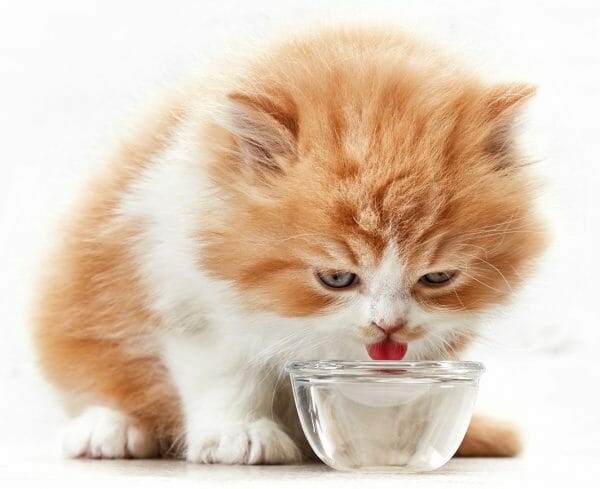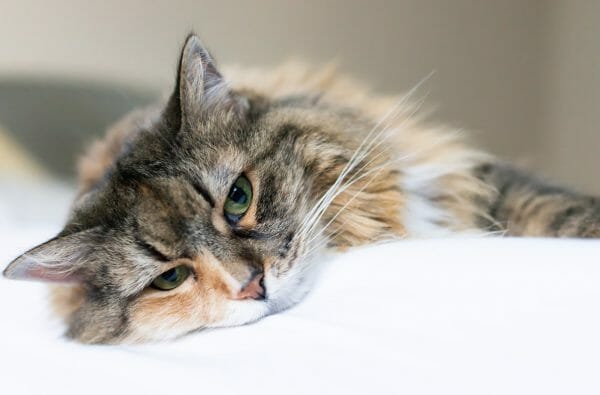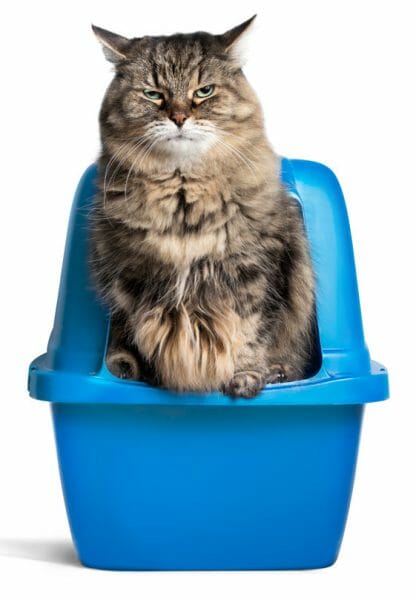Symptoms of Diabetes in Cats
Within the feline population, researchers and vets alike have been observing an uptick in the prevalence of diabetes, with up to 2% of cats being diagnosed yearly. Some even state that this number is low since many cats go undiagnosed.
The underdiagnoses of diabetes in cats may very well have to do with how benign the symptoms can appear in their manifestation. Listed below are the symptoms commonly observed in diabetic felines.

Symptoms
- Consuming excessive amounts of water
- Frequent urination, especially accidents outside of a litterbox
- Loss of weight
- Fluctuations in appetite
- Lethargic behavior
In more dire cases of this condition, vomiting and issues involving the nervous system may be seen. In isolation, these symptoms may be overlooked by the owner as the cat simply experiencing a brief sickness. However, with diabetes, these symptoms usually overlap.
It is imperative that the cat is seen by a vet if these symptoms arise concurrently. It is important to rule out the countless other illnesses that are known to share these widespread symptoms, such as anemia, hypothyroidism, and feline panleukopenia.
What Causes Diabetes?
Diabetes (or diabetes mellitus) results from the pancreas being unable to adequately generate enough insulin. This lack of normal insulin levels then prevents glucose, or blood sugar, from being regulated and distributed sufficiently to the proper parts of the body that require this form of energy. Essentially, the feline is being starved of the energy (glucose) it needs to function properly.
Although there is no definitive cause of this condition, obesity has been found to have a strong correlation with the diagnosis of it. Males more often develop this condition than females.
Medical conditions of the endocrine system (such as Cushing’s disease) are also linked with this disorder. Even more, prednisolone (a steroid used in feline cancer therapy) has been singled out as a causative factor in diabetes.

Can Diabetes Go Away?
Although diabetes does not simply go away, there is a possibility for the feline to go into either a full or partial remission. This usually only occurs if the vet and owner work consistently to help the cat maintain normal insulin levels along with a balanced lifestyle.
A cat may only go into remission if its glucose levels are kept extremely stable due to the owner’s diligence with checking its levels and keeping the cat in good shape. In conjunction with treatment, a healthy diet that is geared toward a diabetic cat can facilitate the cat toward remission. Some felines can remain in remission from several months to even a few years.
Types of Diabetes in Cats
There are two main types of diabetes in cats: Type 1 and Type 2. Although there is a third type that may result from outside conditions (such as pregnancy), it is very rare. In felines, Type 2 diabetes is most frequently diagnosed.
Type 1 Versus Type 2 Diabetes

Both types of diabetes fall under the umbrella term of diabetes mellitus, which is a more technical term for the inability of the body to properly interact with insulin.
- Type 1 Diabetes: In Type 1, the cat’s body nearly stops all production of insulin. This type is known as insulin-dependent. This is rarely diagnosed in cats.
- Type 2 Diabetes: In Type 2, even though the feline is still producing tiny amounts of insulin, it is not enough to supply the cat with efficient energy. Alternatively, it is possible that Type 2 diabetes causes the cat to become resistant to insulin. In this instance, large amounts of insulin are needed to equalize their levels.
In both types of diabetes, insulin is unable to do its job of regulating blood sugar. As a result, an excess of glucose begins to build up in the bloodstream, which can lead to significant problems.
Diabetes Insipidus
Another type of diabetes is known as diabetes insipidus (DI). In this type of diabetes, the cat is unable to retain water sufficiently due to a deficit of vasopressin in the cat’s system. Vasopressin is responsible for the normal regulation of water. Because of this, urination occurs at an abnormally frequent rate. This disorder may be brought on by a tumor, cancer, or it may be inherited.
Treatment
Treatment for diabetes is focused on managing the condition rather than curing it. This management is often life-long. Although it will differ from case to case, diabetes treatment is outlined in broad strokes below:
- Eliminate outstanding issues. One of the first steps to treatment is ensuring the cat is eating a diabetes-friendly diet that is both low in carbohydrates as well as high in fiber and protein.
- Keep scheduled check-ups with the vet. Regular visits to the vet will need to be about every 3 or 4 months. At these appointments, the vet will examine the cat’s progress by running tests of the urine and blood.
- Caring for the cat at home. At home, feline owners will most likely need to admit daily insulin shots, monitor glucose levels, and pay close attention to the cat’s behavior for any outlying issues. Although this might initially be intimidating to the owner, the vet will thoroughly explain how to properly care for a diabetic cat. As always, any concerns or questions can be directed to the cat’s vet.
For insulin, one viable option is Vetsulin. However, this medicine is available prescription only. An over-the-counter option for insulin is Humulin N. Whatever type of insulin is chosen, it is always best to consult a vet before administering it to the cat.

Life Expectancy
If the cat’s day-to-day condition is closely monitored and adjusted as needed, the cat can live a full, happy life for many years.
How to Prevent Feline Diabetes
There is no proven way to prevent feline diabetes. Although keeping a cat in-shape and feeding it nutritious food may lower its chances of developing the condition, there is no solid evidence proving this. In some cases, this condition has been found to be congenital in nature, which makes it unavoidable.

Ketoacidosis
It is also crucial to prevent ketoacidosis—a condition that can stem from diabetes. Ketoacidosis is when ketone bodies accumulate in the bloodstream, leading to a medical emergency. It is important to regularly check ketone levels to ensure they are within the normal range.
Can You Cure Diabetes?
Although there is no known cure for diabetes in the feline population, frequent check-ups, a healthy diet, regular insulin injections, and the close supervision of glucose levels are all stepping stones toward remission for the cat. It is worth reiterating that a feline diagnosed with this disorder can still live a wonderful, long life as long as it is cared for with diligent and loving effort.




